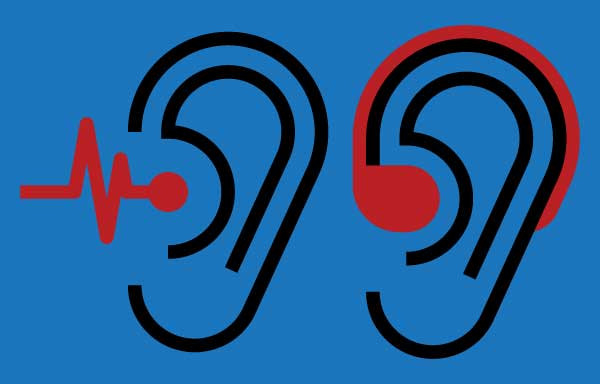
Lifestyle changes like regular exercise, a healthy diet, and sufficient sleep are cornerstones of self-care for people with type 2 diabetes.
But what about mind-body practices? Can they also help people manage or even treat type 2 diabetes? An analysis of multiple studies, published in the Journal of Integrative and Complementary Medicine, suggests they might.
Which mindfulness practices did the study look at?
Researchers analyzed 28 studies that explored the effect of mind-body practices on people with type 2 diabetes. Those participating in the studies did not need insulin to control their diabetes, or have certain health conditions such as heart or kidney disease. The mind-body activities used in the research were:
- yoga
- qigong, a slow-moving martial art similar to tai chi
- mindfulness-based stress reduction, a training program designed to help people manage stress and anxiety
- meditation
- guided imagery, visualizing positive images to relax the mind.
How often and over what time period people engaged in the activities varied, ranging from daily to several times a week, and from four weeks to six months.
What did the study find about people with diabetes who practiced mindfulness?
Those who participated in any of the mind-body activities for any length of time lowered their levels of hemoglobin A1C, a key marker for diabetes. On average, A1C levels dropped by 0.84%. This is similar to the effect of taking metformin (Glucophage), a first-line medication for treating type 2 diabetes, according to the researchers.
A1C levels are determined by a blood test that shows a person’s average blood sugar levels over the past two to three months. Levels below 5.7% are deemed normal, levels from 5.7% to less than 6.5% are considered prediabetes, and levels 6.5% and higher are in the diabetes range.
How can mind-body practices help control blood sugar?
Their ability to reduce stress may play a big part. “Yoga and other mindfulness practices elicit a relaxation response — the opposite of the stress response,” says Dr. Shalu Ramchandani, a health coach and internist at the Harvard-affiliated Benson-Henry Institute for Mind Body Medicine at Massachusetts General Hospital. “A relaxation response can lower levels of the stress hormone cortisol. This improves insulin resistance and keeps blood sugar levels in check, thus lowering A1C levels.”
A relaxation response can help people with diabetes in other ways, such as by improving blood flow and lowering blood pressure, which protects against heart attacks and strokes.
What else should you know about this study?
The results of studies like this suggest a link between various mind-body practices and lower A1C levels, but do not offer firm proof of it. Levels of participation varied widely. But because all mindfulness practices studied had a modest positive effect, the researchers suggested that these types of activities could become part of diabetes therapy along with standard lifestyle treatments.
Could mind-body practices protect people against developing type 2 diabetes, especially for those at high risk? While this study wasn’t designed to look at this, Dr. Ramchandani again points to the long-range benefits of the relaxation response.
“Reducing and managing stress leads to improved moods, and greater self-awareness and self-regulation,” she says. “This can lead to more mindful eating, such as fighting cravings for unhealthy foods, adhering to a good diet, and committing to regular exercise, all of which can help reduce one’s risk for type 2 diabetes.”
Trying mind-body practices
There are many ways to adopt mind-body practices that can create relaxation responses. Here are some suggestions from Dr. Ramchandani:
- Do a daily 10-minute or longer meditation using an app like Insight Timer, Calm, or Headspace.
- Attend a gentle yoga, qigong, or tai chi class at a local yoga studio or community center.
- Try videos and exercises to help reduce stress and initiate relaxation responses.
- Practice slow controlled breathing. Lie on your back with one or both of your hands on your abdomen. Inhale slowly and deeply, drawing air into the lowest part of your lungs so your hand rises. Your belly should expand and rise as you inhale, then contract and lower as you exhale. Repeat for several minutes.
About the Author

Matthew Solan, Executive Editor, Harvard Men's Health Watch
Matthew Solan is the executive editor of Harvard Men’s Health Watch. He previously served as executive editor for UCLA Health’s Healthy Years and as a contributor to Duke Medicine’s Health News and Weill Cornell Medical College’s … See Full Bio View all posts by Matthew Solan
About the Reviewer

Howard E. LeWine, MD, Chief Medical Editor, Harvard Health Publishing
Howard LeWine, M.D., is a practicing internist at Brigham and Women’s Hospital in Boston, Chief Medical Editor at Harvard Health Publishing, and editor in chief of Harvard Men’s Health Watch. See Full Bio View all posts by Howard E. LeWine, MD









 Everyone has moments when their brain suddenly goes haywire. They repeatedly fixate on the same thought, like being stuck on a hamster wheel. Or their thoughts aimlessly bounce from one random topic to the next like a pinball.
Everyone has moments when their brain suddenly goes haywire. They repeatedly fixate on the same thought, like being stuck on a hamster wheel. Or their thoughts aimlessly bounce from one random topic to the next like a pinball.



















